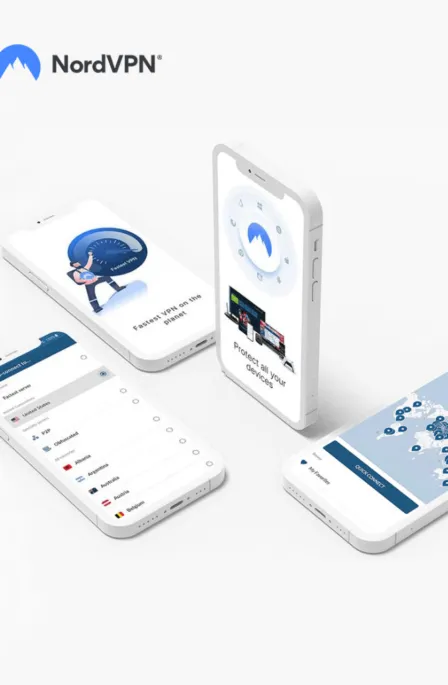Cybercrime will continue to rise and will likely cost $10.5 trillion in 2025. As more companies suffer from reputational and monetary loss, fighting against these crimes has become the organization’s critical responsibility.
Many organizations still struggle to protect their attack surface, making them vulnerable to attacks. One such emerging technology is attack surface management (ASM), which requires organizations to assess the risks attackers can exploit.
Considering the rising threats and risk of cyber-attacks, organizations must integrate ASM within their security infrastructure and maximize data security. Even if businesses already practice, they must consider how they can improve.
What is an Attack Surface?
An organization’s attack surface collects all the attack vectors or points that cybercriminals use to manipulate or infiltrate the corporate network to steal data. A large attack surface contains several points through which an unauthorized person can access sensitive data such as customer data, financial records, product information, confidential business data, etc.
Companies must monitor the attack surface to reduce cyber risks and boost their security posture. However, it is essential to understand the various types of attack surfaces.
Security experts categorize attack surfaces into three main types: digital, physical, and social engineering attack surfaces.
- The Digital Attack Surface covers all external vulnerabilities and is easily accessible via the Internet. Poor email security, weak credentials, and an unpatched operating system are examples of digital attack surfaces through which hackers can access your network.
- The Physical Attack Surface encompasses all vulnerabilities in endpoint devices that hackers can physically access. This includes hard drives, laptops, mobile phones, and USB drives. The physical attack surface also contains endpoints vulnerable to malicious insider threats. For example, a rogue employee shares data with unauthorized people outside the organization’s network.
- Social Engineering Attack Surface tricks the employees into clicking on a malicious link to download malware-embedded software or give away their sensitive information.
Each attack surface contains various attack surface types. Thus, knowing about them and designing a comprehensive enterprise security plan is necessary.
What is Attack Surface Management?
Attack surface management (ASM) is the continuous discovery, classification, prioritization, remediation, and security monitoring of the potential vulnerabilities and attack vectors that comprise the organization’s attack surface. It is an effective strategy that helps companies better understand how an attacker might perceive their attack surface and then prioritize the criticality level to implement a proactive approach toward risk management.
In other words, it helps improve visibility across all potential attack vectors, take steps to reduce the attack surface, and improve the organization’s security posture. This way, companies can limit the potential attack surface while improving the overall cybersecurity posture. Also, it helps businesses to increase transparency and strengthen business and customer relationships.
An organization’s attack surface evolves, constantly adding new devices and users. Thus, there’s an immense need to continuously monitor and evaluate the assets and detect vulnerabilities before cybercriminals can exploit them.
How does ASM keep data safe?
Several leading causes of a larger and more complex attack surface lead to a data breach. No matter what the cause, it always causes significant damage to an organization. Luckily, with attack surface management, it’s now easy to promptly respond to reduce cyber risk and protect data and other digital assets.
Below is the breakdown of the five stages of how the ASM protects critical business data from malicious actors.
Stage No 1: Detection
During this initial phase, the organization recognizes and maps all the digital assets across the internal and external attack surfaces. This provides increased visibility, and organizations can look deeper into the attack surface to know which asset can serve as a potential attack vector. Though it seems easy, it isn’t because the traditional solutions are insufficient to discover the rogue or external attack surface.
Thus, companies must invest in modern tools that can easily detect the methods used by malicious actors and find vulnerabilities within their environment. They must also determine any signs of unauthorized access that hackers might be using to enter their network.
Stage No 2: Analysis
The next step is attack surface analysis. It helps organizations identify areas that need more security testing and locate high-risk areas that need immediate testing and consideration. There are two main ways to perform attack surface analysis: organizations can hire penetration testers and security architects or use automated tools. These professionals continuously monitor the security infrastructure for existing or emerging vulnerabilities and misconfiguration and inform the security teams about them.
Stage No 3: Prioritization
Prioritization of the attack management surface provides actionable risk scoring that detects high-risk areas. In this stage, the organization prepares a to-do list of security flaws that need immediate action. Organizations can better focus on mitigating them by giving an objective rating that targets particular assets.
Stage No 4: Remediation
This is the final stage to mitigate the vulnerability and issues that can lead to criminal activity. The security teams can fix the vulnerabilities by adopting adequate security measures like updating the software, patching the OS, removing malicious assets, troubleshooting the app code, or deploying data encryption.
Stage No 5: Monitoring
But this cycle doesn’t end here. Attack surface management is an ongoing process. It requires constant monitoring and scanning of the network assets and the network itself to uncover any new vulnerability in the organization’s attack surface. It notifies the security teams to respond proactively to make the vulnerabilities ineffective.
While an organization cannot eliminate 100% of its vulnerabilities, this approach helps it stay ahead of attackers by securing the top assets, so it’s better not to overlook them.
Why is Attack Surface Management important?
Attack surface management is vital to all organizations, regardless of their size. Companies with less sophisticated security infrastructure or fewer trained cybersecurity experts make them easy targets for cyber agents.
Some real-life scenarios where the need for attack surface management was felt the most was to prevent the famous Colonial Pipeline and SolarWinds supply chain attacks. In both cases, the hackers targeted those attack surfaces within an organization that was not monitored by the security teams.
However, a strong and effective ASM can improve your network and infrastructure security. It is a continuous process that perceives the attacker’s viewpoint and maps the organization’s attack surface from the outer side to gain more visibility into hackers’ digital footprints.
ASM is a vital element for the organizational cybersecurity architecture because:
- Recognizing misconfigurations: It helps to detect misconfigurations within firewalls, operating systems, or IT assets. It also successfully detects weak passwords, outdated software, viruses, malware, or rogue endpoints vulnerable to cyber attackers.
- Protection of sensitive data: A practical ASM approach makes protecting sensitive data and intellectual property easier by continuously monitoring the attack surface. Because of solid security measures, attackers will only encounter resistance instead of easily accessing your systems and networks.
Attackers need a single vulnerability to exploit the attack surface and launch a cyber-attack. However, businesses can prevent data breaches and safeguard against vulnerabilities by adopting effective attack surface management programs.
Best practices for ASM- How to reduce Attack Surface
ASM is an emerging technology, but a report finds that 60% of organizations have low confidence in managing attack surface risk. This is mainly because cyber crooks use sophisticated methods to target organizations and their users’ data.
Security experts have suggested various techniques organizations must practice to improve attack surface management. Some of the best practices are as follows:
- Organizations are sometimes unprepared for cyber-attacks and lack checks and balances to measure their policies. Hiring security auditors and analysts can be a great option to prevent this issue. They discover the attack vectors and vulnerabilities that remain unnoticed.
- Compliance policies can also ensure the organization effectively runs the attack surface management. The fear of hefty fines and penalties for not following a proper response plan to various cyber-attacks and breaches can make companies take effective measures before time.
- Implement a zero-trust security model within your business environment that removes the notion of trust and emphasizes verifying everything. This strengthens the organization’s security infrastructure and minimizes the entry point numbers by ensuring that only the authorized person can access the network.
- With the adoption of a remote work culture and the increase in the use of personal devices at work, cybercriminals find more vulnerable points to access the internal network. Creating strict remote work policies and providing remote access through secure channels will help mitigate the attack surface risk.
- Network segmentation is yet another great practice for reducing the attack surface. Adding barriers such as firewalls into the network environment blocks attackers and offers resistance to attacks.
Above all, employees are always the first defense against cyber attacks. Ensure employees get proper cybersecurity training to understand the best practices for reducing the attack surface and combating potential cyber risks and attacks.
Share this article
About the Author
Waqas is a cybersecurity journalist and writer who has a knack for writing technology and online privacy-focused articles. He strives to help achieve a secure online environment and is skilled in writing topics related to cybersecurity, AI, DevOps, Cloud security, and a lot more. As seen in: Computer.org, Nordic APIs, Infosecinstitute.com, Tripwire.com, and VentureBeat.
More from Iam WaqasRelated Posts

19 Best Vulnerability Management Software or Tools in 2024
KEY TAKEAWAYS Vulnerability management tools scan and detect weaknesses within the network that hac...

How to Detect, Identify and Fix Packet Loss with Best Tools
KEY TAKEAWAYS Packet loss reduces the speed and amount of data that flows through the network. This ...

15 Best Network Security Software – Top Pick Of Organizations
KEY TAKEAWAYS Network security software keeps the data secure and blocks malicious or potentially vu...

15 Best Virtual Machine Software for Windows in 2024
KEY TAKEAWAYS Virtual machine software is a vital tool for developers to deploy VM software to test ...

What is Software Deployment: Risks and Best Practices
KEY TAKEAWAYS Software deployment is facing various security risks amidst the advancements in the in...

Building Encryption into the Network Fabric with SASE
A network fabric is a mesh of connections between network devices such as access points, switches, a...





